Mar 14 2017, 2:38 pm in March Madness, National Women's Month, St Joseph's Day, St Patrick's Day
As I mentioned in a previous post, it’s National Women’s History Month.
Spring break for a lot of schools. Here in Florida we’re bracing for the influx of sun and fun lovers and those escaping winter storm Stella.
There’s March madness. If you’re not into college basketball you probably know nothing about that. If you are into college B ball no need to say more.
The Feast of St Joseph is March 19th. Big day for Italians.
March 17th is St Patrick’s day. The Irish in the US celebrate BIG time.
We lived in Kansas City and there was a huge parade and other activities that may or may not have included adult beverages. A very Irish friend had an uncle visiting from the ‘old country’ and that was the first time I realized the day wasn’t celebrated (at that time early 80s) all that much in Ireland. The man was quite taken aback with the celebration. He was recounting all he’d seen when he paused, looked at us all serious and said, “And that green beer.” He shook his head. “They’ll be peeing green for a month I know.”
My characters from Under Fire: The Admiral, Gemma and Ben, shared an experience they had a few months ago while visiting Ireland.
They were in the Irish countryside on a very dark, stormy night–really it was–in the middle of nowhere. They’d stopped at a local pub for dinner and were enjoying the food, pints, and conversation when the pub door slammed open. A soaking wet, obviously upset young man stood in the doorway. He rushed in babbling about a horrible experience.
He was settled into a chair and given a pint. The beer was half-gone before he could string words into sentences and answer the many questions. The young man explained he was backpacking through Ireland and on a deserted road with rain pelting down so hard he could hardly see a few feet ahead. Finally, a car came slowly towards him and stopped. Desperate for shelter and thinking he was being offered a ride, he got in and closed the door only to realize there was nobody behind the wheel. Even though the engine wasn’t on, the car once again started moving. Ireland’s many ghost stories rumbled through his brain and fear paralyzed him. That is until he looked at the road ahead and saw a curve looming. Gathering courage, he prepared to jump. Then, through the driver’s window, a ghostly hand appeared out of gloom. In terror, he watched as the hand turned the wheel, guiding the car around the curve.
The lights of the pub appeared and gathering strength, he jumped out of the car and ran for it.
A silence enveloped the pub when everybody realized he was crying.
Once again the door slammed open, startling everyone, and two men walked in from the dark and stormy night. They too were soaked and out of breath. Looking around, and seeing the young man sobbing at the bar, one said to the other…
“Look ….there’s that fookin idiot that got in the car while we were pushing it!”
Mar 6 2017, 9:19 am in Family History, Women's History Month
As a writer I’m asking you to take some time and talk to the women in your family to get the other half of the story. Other half of the story? Yes. World events, disasters, family triumphs and celebrations told from their point of view. And write it down. The vast majority of historical events is written with a male perspective. Hearing a woman’s point of view can be enlightening. Where they were, what they thought when Neil Armstrong set foot on the moon. Who in your family remembers rationing during WWII? Ask how difficult it was during that time to go months without letters from a loved one. Find out what it was like to have a family member in Vietnam and, for the first time in history, see the war every evening on the news. What they remember about Jackie Kennedy. Their first car. Boyfriend. The time they met Elvis. The real reason Aunt Gertrude left town. How Uncle Johnny got all his money. Have you ever spoken to your mom about the day you were born? Do you know the black sheep of your families? How did the women in your family meet the love of their life? What they thought when they did. I asked this question at a ladies gathering. One gal shared how she met the love of her life and then told us how she met her husband. Do you want your children to know how you met their father?
My Aunt was going to reveal a huge—her word—family secret to me. We’d set up a time for me to go over and hear this secret. She died before she could tell me. I’m left with a bazillion questions and a great deal of regret. Don’t have this happen to you. Transfer your family stories to words on the page so they will never be lost.
There is a perfectly wonderful National Women’s History Museum web site to learn more about women of this country and inspire you. I particularly like the online exhibits page.
I write about strong female characters. Women at the top of their fields. On the left in the scrollin bar you can see the courageous women who have inspired me.
Feb 10 2017, 12:23 pm
 I associate lighthouses with the Coast Guard because before automation the Coasties maintained the lights. I associate the Coast Guard with protecting our shores and water rescues. After the Civil War the public demanded the government do something about the loss of lives and property at sea and the precursor to our modern Coast Guard was born, the US Revenue Cutter Service. Today the Coast Guard has cutting edge equipment, fast boats, helicopters, highly trained and dedicated men and women with grit and courage. Lifesaving rescues are made weekly. I associate lighthouses with the Coast Guard because before automation the Coasties maintained the lights. I associate the Coast Guard with protecting our shores and water rescues. After the Civil War the public demanded the government do something about the loss of lives and property at sea and the precursor to our modern Coast Guard was born, the US Revenue Cutter Service. Today the Coast Guard has cutting edge equipment, fast boats, helicopters, highly trained and dedicated men and women with grit and courage. Lifesaving rescues are made weekly.
Travel back to the late 1800s when the service first operated. In 1897, eight whaling ships were trapped in Arctic ice surrounding Point Barrow, the northernmost point of Alaska. With a dwindling food supply, the whalers had little chance of surviving.
The Bear, a cutter commanded by Captain Francis Tuttle, sailed from Port Townsend, Washington. It was too late in the year for the cutter to push through the ice, so it was decided a rescue must go overland. The rescue party led by Lieutenant Jarvis traveled the distance to Point Barrow overland from Cape Vancouver, roughly 1,500 miles. They traveled on snowshoes and skis and carried the provisions using sleds pulled by dogs and reindeer. 1,500 miles with temperatures below zero! No down coats, hand and feet warmers, super-duper tents camping heaters and stoves. They saved the lives of 265 whalers. Now that’s courage and dedication.
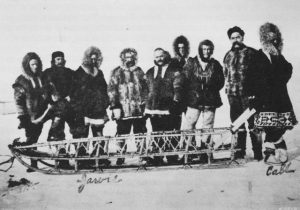
The rescue team.
In 1880 the service appointed Captain Richard Etheridge, a Union Army veteran, as the keeper of the Pea Island Life-Saving Station in North Carolina. This station is a few miles north of the Cape Hatteras lighthouse. Soon after Etheridge’s appointment, the station burned down. Determined to execute his duties Etheridge supervised the construction of a new station. He also drilled his crews in rigorously enabling them to tackle all lifesaving tasks. His station earned the reputation of “one of the tautest on the Carolina Coast,” with its keeper well-known as one of the most courageous and ingenious lifesavers in the Service.
On October 11, 1896, Etheridge’s rigorous training drills proved to be invaluable. A three-masted schooner, caught in a terrific storm was blown a 100 miles south off course and grounded two miles south of the Pea Island station. The storm was so severe that normal beach patrols were suspended and it was by chance one of the station crew saw the ships distress flare.
Etheridge and his crew hitched mules to the beach cart and hurried toward the vessel. They found the ship’s captain and eight others clinging to the wreckage. Unable to fire a rescue line because of high water Etheridge directed two surfmen to tie themselves together with a line. Grasping another rope, the pair moved into the breakers while the remaining surfmen secured the shore end. The men reached the wreck, tied the line around one of the crewmen, and all three were pulled back through the surf by the crew on the beach. They did this until the all nine were safely on shore. Can you imagine going into what had to be a hurricane surf with nothing but a rope for safety? What incredible courage. It also makes me very glad that the Coasties of today are better equipped so they can go home safely to their families every day.

The Pea Island Crew.
Here are a few of the rescues made in the last week bu our Coasties .

JACKSONVILLE, Fla. The Coast Guard rescued three fishermen Tuesday after the fishing vessel they were on caught fire 1 mile east of St. Catherine’s Island, Georgia.
02/06 SAVANNAH, Ga. — The Coast Guard rescued two teenagers and their dog Monday after their canoe became stuck in a marsh on Wilmington Island.
SAN JUAN, Puerto Rico – The crew of a Coast Guard HH-60 Jayhawk helicopter from Air Station Cape Cod rescued an Austrian boater Sunday from a life raft in the Atlantic Ocean.
NEW ORLEANS – The Coast Guard medevaced a 76-year-old male aboard the cruise ship Norwegian Dawn approximately 10 nautical miles south of Southwest Pass,
WARRENTON, Ore. – The Coast Guard rescued three commercial fishermen after their vessel began taking on water at the mouth of the Columbia River early Sunday morning. MIAMI – Coast Guard rescued seven people Wednesday from a 180-foot motor vessel taking on water about 46 miles west of Great Inagua, Bahamas. At 5:20 a.m.
Thank you United States Coast Guard for the lives you’ve saved and all you do.
Feb 5 2017, 11:36 am
Just going to leave it here for you to see these lights and think about the men and women who, a hundred years ago, walked the stairs and lit the oil for the lights to protect others.
Beaver Island Light MI. 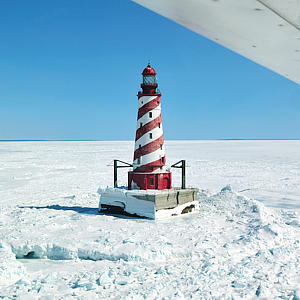
The Light at White Harbor Maine.
Nantucket MA. 
Grand Haven MI.
Point Betsie MI.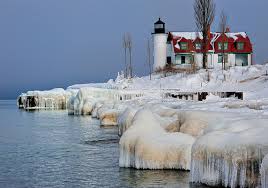
Marblehead Light MA.

Burlington VT breakwater light. 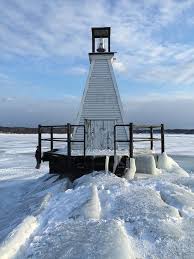
Thank you to all the courageous light keepers.
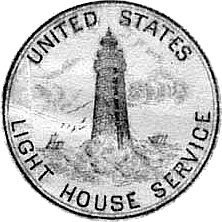
Jan 27 2017, 11:58 am in Chinese New Year, Funny Story
 Many year ago, in a galaxy far, far away we lived in Hawaii. My husband was station there with the Marine Corps. On the Chinese New Year we took our children, ages six, four, two and seven months, to Honolulu’s Chinatown festivities. It was all very exciting. Lanterns hung everywhere, firecrackers exploding, the paper dragon snaking through the streets. The children were mesmerized. Many year ago, in a galaxy far, far away we lived in Hawaii. My husband was station there with the Marine Corps. On the Chinese New Year we took our children, ages six, four, two and seven months, to Honolulu’s Chinatown festivities. It was all very exciting. Lanterns hung everywhere, firecrackers exploding, the paper dragon snaking through the streets. The children were mesmerized.
My husband caught sight of two Marines who worked for him and who frequently found themselves in scrapes. Being big daddy marine went to caution them to stay out of trouble. I stayed back with the children. A few feet from us, one of those ten foot long strips of firecrackers was lit. The children and I were enveloped in a thick smoke with bits of paper flying everywhere. I maneuvered the stroller with the two youngest against the wall and did my best to wrangle the two older children behind me for protection.
A young Chinese woman came to the door a couple of feet away and shouted to me to come in. I went. She helped me hoist the stroller up the steps and inside to an elaborately decorated room. I thanked her profusely and we stood just inside waiting for the smoke to clear. Soon five or six young women appeared with Chinese sweets for the children who snarfed them down. All the ladies were gushing over my beautiful children.
I see my husband standing on the sidewalk frantically looking for us and called out to him. He turned and through the smoke he looks in at me with the most god awful look on his face.
One of the ladies motions for him to come in. He stood frozen, staring at me. The lady who had invited us inside called to him to come in and have a beer. That did it! He came in and in seconds he’s offered a beer, which he took without a word and I might say still starting at me.
“What?” I asked him.
He took a big swallow, leans to me and says, “This is a whore house.”
I looked around and realized he is right. All I could do was smile up at him and shrug. He sighed, shook his head and gave me his patient smile. Finally he wrapped a long arm around me, pulled me close and graciously thanked the lady for the beer.
A sound at the door caused us to turn. There in the doorway were the two Marines my husband had caution to stay out of trouble. The look on their face when they saw him with his family inside was priceless. Recovering, they ducked their heads and silently disappeared back into the smoke and chaos on the sidewalk.
I would love to know what the young men told their fellow Marines the next day about going to a Chinese whore house and finding him and his family inside.
Jan 16 2017, 11:36 am in Home spa day
A day at the spa can be expensive. You can create a much less expensive day of relaxation at home.

Items Needed:
Two hours with no one home. (You CAN do it. You deserve this.)
Device to listen to soothing music.
Book or magazine.
Plain oatmeal.
Paper towels.
Witch hazel.
Lavender bath salts, or lavender or rosemary sprigs.
Favorite body oil or cream.
Lawn chair.
Lots of towels.
Robe.
Space heater if you have one.
Set up
Mix oatmeal with warm water making a paste and set in bathroom
Turn on music.
Turn space heater to high and close bathroom door. If you can lock it!
Fill tub with hot water. Put in lavender or rosemary.
While tub is filling set up lawn chair and cover with towels.
Bathroom should be getting toasty by now.
Get nekked and soak in tub until water begins to cool.
Climb out and slather body with oil or favorite lotion. Drain tub.
Wrap in a couple of towels or heavy robe.
Cover face and neck with oatmeal paste.
Sit in the chair, prop your feet on the edge of the tub and chill. Listen to calming music or read for 30 to 45 minutes.
Use damp paper towels to remove oatmeal.
Take a long hot shower until the water runs cold.
Use witch hazel on your face (toner).
Re-oil or lotion your body.
Turn heater off.
You should feel like a cooked noodle. Limp and relaxed, ready to get back to writing, reading and dealing.
Enjoy.
Jan 5 2017, 9:00 am
Sometimes authors and those in publishing rattle off industry terms and acronyms forgetting not everyone knows what they mean. So I’ve listed a few. I’m sure I’ve left out some. Feel free to add, or ask about those not included in the comments.
TYPES OF FICTION
Commercial Fiction- Fiction written in ‘plain’ language that focuses on plot and content rather than prose. Commercial fiction, also called mainstream fiction, focuses on plot and character development and has a narrative structure.
Dystopian Fiction – Dystopian is the opposite of Utopia. Dystopian Fiction focuses on a world that is completely different from what one would consider to be an ideal world. It features a futuristic projection of a world (usually a government) that perceives itself as or is striving toward being a utopia, and the book/series is frequently about the unraveling of either that world view or the government itself.
Genre Fiction- A genre is a label that describes a particular kind of story. Within commercial fiction, genres break the books down into smaller categories such as Romance, Science Fiction, Fantasy, Mystery, and so on. Within a genre there are often sub-genres, or even narrower categories. For example, the Romance genre has sub-genres such as Paranormal Romance or Historical Romance.
Literary Fiction –Literary Fiction is considered to have ‘literary merit’ as opposed to wide commercial appeal. Generally focused more on the writing style or ideology than the content. Often the prose is admired for its lyrical quality.
Romantic Fiction – A type of genre fiction. A book that has a central love story and an emotionally satisfying and optimistic ending.
Steampunk – A genre that originated during the 1980s and early 1990s and incorporates elements of science fiction, fantasy, alternate history, horror, and speculative fiction. It involves a setting where steam power is widely used—whether in an alternative history such as Victorian era in Britain or the US Wild West, or in a post-apocalyptic time —that incorporates elements of either science fiction or fantasy
Women’s fiction- A commercial novel about a woman on the brink of life change and personal growth. Her journey details emotional reflection and action that transforms her and her relationships with others, and includes a hopeful/upbeat ending with regard to her romantic relationship.
Young Adult—Novels geared toward young adult readers.
New Adult—Aimed at readers in their early 20s
ACRONYMS
ARC Advance Reader Copy dispersed by publishers and authors before the book is actually released
BCB – Back Cover Blurb
BIC- Butt In Chair
BICHOK — Butt In Chair Hands On Keyboard
GMC —Goal, Motivation, Conflict
HEA – Happily Ever After
H&H — Hero and Heroine
IMO – In my opinion
ISBN – International Standard Book Number
ITA – I totally agree
MS – Manuscript
NA – New Adult
POD – Print on Demand
POV – Point of View
ROTFL – Roll on the floor laughing
ROTFLMAO – Roll on the floor laughing my a** off
RTF – Rich text format
RWA – Romance Writers of America
TSTL – Too Stupid to Live
w/a – Writing as
WIP – Work in Progress
YA- Young adult
PUBLISHING TERMS
Anthology- A book or other collection of selected writings by various authors, in the same literary form, of the same period, or on the same subject. It can be a collection of selected writing by a single author.
Advance – Money the publisher pays when buying a book is an advance against royalties.
Auction-A literary agent sees there is more than one book publisher or editor interested in a book project, the agent holds an auction inviting publishers to bid on the book. A publisher may make pre-emptive persuading the agent to take the project out of auction
Backstory- Anything that happens before page one of the book.
Backlist- A list of older books that are still available from a publisher.
Black Moment – When it appears all is lost and the H&H will never get together.
Boiler Plate – A standard form contract
Blurb- A couple of paragraphs on the back cover that entice a reader to buy the book.
Character Arc – The internal journey a character take throughout the story.
Conflict- Everything that keeps the H&H from getting what they want
- External conflict – external events that get in a characters way of meeting the story goal
- Internal conflict – Issues coming from within the character that prevent them from being emotionally complete
Copy Editor – Edits for typos, grammar, and consistency.
Copyright -A publisher is granted rights to publish, but it’s the author who holds copyright.
Critique – Read another’s manuscript and offer advice on grammar, punctuation, spelling, story structure
Dialogue – Discussion between characters used to move the story forward, reveal the past, develop character, illuminate theme, or define tone.
Dialogue Tag – Tells the reader who is speaking and how the speaker is saying it.
Digital Device- Anyone of a number of devices with a screen to read an electronic book. Kindle, Kobo, Nook, Sony have products allowing you to store books, magazines, newspapers, listen to music and audio books. Many smart phones can do the same.
e-book – A book available to read on a digital device.
Full Manuscript request – Agent/Editor will ask to read a completed, edited and polished manuscript.
Galley – Is the manuscript after it has been typeset.
Genre Fiction– Romance, mysteries, science fiction, Westerns, horror, and thriller novels written to entertain.
Goal – What your characters want to achieve in the story.
Head Hopping – Frequently switching POV from one character to another in a scene.
High Concept –A story that has a different twist, is universal, has an intense emotional pull and can be explained in a few words.
Hook – An unexpected end of a scene and chapter designed to keep the reader turning pages.
Inciting Incident- sets your story in motion once your foundation is solid. Is a life-altering event for the protagonists. It forces the protagonist to choose between their old world and an opportunity that will change them.
Indi Publishing or Self-publishing- The publication of any book or other media by the author of the work, without the involvement of an established third-party publisher. The author is responsible and in control of entire process including design (cover/interior), formats, price, distribution, marketing & PR.
Info Dump- A large chunk of narrative giving backstory information that slows the forward motion of the plot.
Literary Agent- A publishing professional working with/for an author to sell books to a publishing house.
Literary Novel –Book written with a goal to enlighten
Manuscript – An unpublished book
Mass-Market Paperback– Mass-market books are designed to fit into the racks set near the checkout counter at supermarkets, drugstores, hospital gift shops and airport newsstands. They are priced affordably so they can be bought on impulse.
Mid-list Author- Authors who consistently publish good but not bestselling books.
Motivation – Why a protagonist wants something.
Novel- A work of fictional narrative prose in the romance genre of at least 40,000 words as determined by computer word count.
Novella– A work of fiction of 20,000–40,000 words as determined by computer word.
Pacing – Speed of forward motion of the story.
Pantser- An author who does not plan/plot a story.
Partial Manuscript request-An agent or editor, based on a query letter or pitch will request to see the first three chapters or fifty pages of the manuscript.
Pitch- Authors speaking with an editor/agent about the main characters and plot of their book. Elevator pitch is telling the story in a couple of sentences.
Plotter- An author who plans and plots an entire story and writes according to this plan.
Plot points – Key scenes to the story line that add complications to the initial goal set by the protagonist.
Plot point one– the moment something enters the story in a manner that affects the protagonist’s status, plans and beliefs, forcing them to take action in response, and from that point forward everything changes for them. This event occurs in the 20 to 25 percentile of the story.
Plot point two – the final point where new information may enter the story. Where the protagonist receives everything they need to bring the story to an end. This occurs around the 75 percentile of the story.
Point Of View –Which character is sharing internal thoughts are being shared and what tense is being used to tell the story.
Proposal- Sent to and editor by a published author to pitch a new book. A big name author may receive a contract for a concept. Most will send a description of the proposed book, including an outline or sample chapters.
Protagonist – A story’s principal character, who changes and grows the most in the story, the one with whom the reader identifies with the most
Query letter – A professional one page email sent to an agent or editor showing who, what, and why the story is unique to hook them into reading the full manuscript.
Ragged Lay Down No this is not a description of a steamy sex scene — it’s a description of the way a book is released for sale to the public. It means that the book will be available before its actual publication date. This is a huge issue for big name authors, because to get on the New York Times or USA Today best-seller lists, you want most of your sales to come in a two-week period. So having books sell before the actual publication date, is not a good thing.
Royalty – A percentage paid on sale of each book, most often based on the books cover price, and generally paid quarterly. Some publishers have semi-annual payments.
Scene – A unit of story structure
Small Press –A term often used to describe publishers with annual sales below a certain level. Commonly, in the United States, this is set at $50 million, after returns and discounts. Small presses are also defined as those that publish an average of fewer than 10 titles per year, though there are a few who manage to do more.
Synopsis – A short overview of the main story plot points. What the characters want, why they want it and what’s keeping them from getting it. (GMC)
Slush Pile – To be read manuscripts on an editor’s desk. Generally unsolicited, unagented, manuscripts.
Tag-As in Amazon tags. A tag is a keyword or category label. Tags can both help you find items on the Amazon site and provide an easy way for you to “remember” and classify items for later recall. You can add up to 15 tags per item.
Tagline – A sentence that tells your story. The fewer words the better.
Tense – The authors chooses to tell the story.
- First person
- Second person
- Third person
- Deep third person
- Editorial omnipotent
- Limited omniscient
Three Act Story Structure-Simplified definition.
- lified Act 1—Setup
- Act 2—Confrontation and response
- Act 3—Resolution
Trade Paperback– Are generally printed on more expensive paper and with sturdier binding. Are higher in price and often (not always) printed in smaller numbers trade paperbacks are sold in bookstores (“to the trade”) and are shelved with their spines facing out.
Troll- For our purpose not the critters who live under a bridge. Troll and its associated verb trolling are associated with Internet discourse. Trolls post inflammatory, messages in an online community, such as a forum, review, chat room, or blog, with the primary intent of provoking an emotional response.
Universal theme – Touches something primal in all of us and pulls us deeply into a story.
Unsolicited Manuscript – A complete manuscript sent to an agent or editor without a request.
Voice – How an emotional connection is made with the reader. Showing the reader life thorough the authors eyes
STORY WORD COUNT
NOVEL OVER 40,000 words
NOVELLA 17,500-40,000 words
NOVELETTE 7,500-17,500 words
SHORT STORY under 7,500 words
MAJOR PUBLISHING HOUSES
Simon & Schuster (a subsidiary of CBS Corporation)
HarperCollins (a subsidiary of NewsCorp)
Penguin Random House (a subsidiary of Bertelsmann and Pearson)
Hachette Livre.
Harlequin TORSTAR
Jan 2 2017, 7:53 pm in 2017, Lighthouses, New State Laws
New Year’s Eve in my neighborhood was a tad sad. Every year since we moved here the neighbors on the next street over have shot off fireworks from dark until the wee hours. This year nothing. All those homes were flooded during hurricane Matthew. The homes are still being rehabbed and some will not return.
I usually spend the last days of a year catching up on movies, books and binge watching TV shows. 2016 was no different. Gotta say the small screen outdid itself with some pretty amazing programs in 2016. Do you have any favorites from 2016?
I wonder about what changes 2017 will bring to our lives. I know several states had new laws take effect on January 1st.
Californians hit the jackpot. Their state legislators decided Dairy farmers have to regulate animal methane emissions—that’s cow farts—even though the state admits there is no known method to achieving this. Ummm….
And for you powdered alcohol lovers (yes, that is a real thing) it is now illegal to possess, sell, make or use powdered booze in Cali. That includes spirits, liquor, wine, beer and every other liquid that can be combined with water or any other liquid. It does NOT include vaporized alcohol. Really?
Oh, and get this. California beauty salons and barber shops can serve wine or beer to their clients until 10 p.m. As long as it’s FREE.
In other California news, some industrious soul changed the Hollywood sign to Hollyweed.

In Maine, brewers will be able to up the alcohol in their cider to 8.5 percent, from 7 percent.
New Hampshire banned bestiality. Wow! I had no idea this was a problem there.
In Pennsylvania, a state with notoriously stringent alcohol laws, beer distributors will be able to sell six packs for the first time.
Do you see a theme here? Lots of states thinking about booze.
Soon I’m going to begin blogging regularly about writing. Mostly writing craft. Share my favorite craft books. Occasionally talk about why I write. Maybe have some of my author friends join in the conversation. I also will be inviting some of my readers to share with us authors what they like in a story.
My lighthouse blogs will continue because I so love my lighthouses. Might even be a free Lighhouse short story for my newsletter subscribers.
I’m looking forward to blogging and seeing you all here over the next months.
Dec 18 2016, 8:57 am in Christmas sights, smells and tastes
Does your Christmas taste, smell, feel and look like mine?
Doubt it. When we think of the different ways Christmas is celebrated we generally think nationality differences and continental differences. Right here in this country Christmas is celebrated in dozens if not hundreds of different ways. Maybe you go to Rockefeller center to ice skate, or to the Plaza in Kansa City (with three hundred thousand other people) to see the lights come on. Or, in St. Augustine Florida, go to the Nights of Lights to see the whole town lit up and to the bay front to watch boats cruise by in their holiday finest.

During Christmas do you see what I see?
I grew up in Florida. Christmas never included snow. I do see white, but its beach sand. What does it look like inside and outside your house for the holidays? We made our own wreaths from cedar boughs or magnolia leaves, decorated with holly and humongous pinecones. Garlands were made of the same material, all of which we gathered ourselves. Table decorations could be palm fronds, magnolia leaves, holly and citrus fruit punctured with cloves.

I decorate with Santas in flower print shirts and sandals. On my tree are twinkle lights covered with shells and plastic flamingos and starfish. Outside I see poinsettias in gardens and palm trees, not Fraser firs, wrapped with Christmas lights. After Christmas I see Santa, in his bright print shorts, riding a yellow bicycle on the beach or surfing. No joke!
How does Santa arrive at your house? In Florida, sometimes Santa comes in a boat pulled by dolphins or alligators. 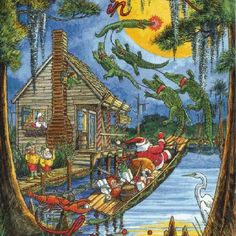
His helpers are big burly guys called Bubba who help deliver gifts by truck.
In Hawaii Santa goes between the islands dressed in print shorts and sandals in an outrigger canoe pulled by four pigs. His helpers are the Menehune. Little people of the islands who live in the deep forest.
In Norway he dresses in a heavy woolen red outfit and arrives in a sled pulled by reindeer. His elves help deliver the gifts.
Santa appears to some children in a Marine Corps dress blue uniform.
During Christmas do you hear what I hear?
How do you say Merry Christmas? Around here it’s likely to be, “Y’all have a Merry Christmas.” Or maybe, according to your heritage, you say one of these.
Mele Kalikimaka- Hawaiian
Feliz Navidad- Spanish
Joyeux Noël – French
Fršhliche Weihnachten! – German
Buon Natale! – Italian
I will also say I’m far more likely to hear boat motors then sleigh bells.
Do you smell what I smell?
In Florida, as I mentioned, many Christmas wreaths and garlands were made with cedar branches. A decidedly different scent than the fir and pine boughs used in northern regions. The citrus punctured with whole cloves. Paper white narcissus. O. My. I can’t describe the scent other than to say it’s Christmas to me.
Do you feel what I feel?
Christmas here feels warm. No need for seven layers of clothing when you are out and about. Even though the evenings can be chilly and damp and a bit foggy this time of year many holiday parties are indoor/outdoor by the pool parties. Or, outside at gathered around a fire pit for an oyster roast.
You certainly don’t feel terrified you will slip on the ice and break your bright and shiny hiney or, some reindeer is gonna run you over. You might want to keep an eye out for gators though.
Do you eat what I eat?
My Christmas food experience has a Spanish influence. Paella, saffron rice cooked with chicken, pork, and a variety of seafood.
Ali Oli, a garlic, mayonnaise like, spread eaten with crispy bread slices. (BTW we were never bothered by vampires) frittata (a potato omelet), roast pork, flan, and citrus rind candy. No Christmas was complete without a Spanish almond nougat candy.
With the joys of social media we get to see what Christmas is like around the globe. As are many of you readers. Please share what the sight, sounds, tastes, smell, and feel of Christmas is to you.
Dec 3 2016, 9:45 am in Marblehead lighthouse
 Marblehead Lighthouse, on Ohio’s Lake Erie, is the oldest lighthouse in continuous operation on the Great Lakes, and has guided sailors safely along the rocky shores of Marblehead Peninsula since 1822. Marblehead Lighthouse, on Ohio’s Lake Erie, is the oldest lighthouse in continuous operation on the Great Lakes, and has guided sailors safely along the rocky shores of Marblehead Peninsula since 1822.
The 50-foot tower stands at the entrance to Sandusky Bay. It was built for $5000.00 from extremely durable native Columbus Limestone. The limestone was also used to line the shoreline around the light to protect against waves. The limestone construction is said to be the reason the light has been in continuous operation since its construction.
15 keepers, two of whom were women, have tended the Marblehead beacon. The first was a Revolutionary War veteran, Benajah Wolcott. Each night, he lit the wicks of the thirteen whale oil lamps that were the original light fixture. Other duties of the lighthouse keeper included keeping a log of passing ships, noting the weather conditions, and organizing rescue efforts. Wolcott died of cholera in 1832, his wife took over the keeper duties until two years later when she married a man who became the lights third keeper. A second female keeper served at the lighthouse from 1896 to 1903, after her husband died. Rough job.
Keeper Charles Hunter served the longest, 1903 to 1933, as keeper. During the three-month-long winter season, when the light was inactive,—Lake Erie was too treacherous for shipping.   —Hunter passed his time with hobbies. He carved a grandfather clock, What?worked yarns into tapestries featuring the light and ships, wrote short stories and the words to the song “The Lighthouse by the Bay.” Talented guy. —Hunter passed his time with hobbies. He carved a grandfather clock, What?worked yarns into tapestries featuring the light and ships, wrote short stories and the words to the song “The Lighthouse by the Bay.” Talented guy.
The whale oil lamps were replaced in 1858 by the light from a single kerosene lantern magnified by a Fresnel lens.
In 1923, an electric light replaced Marblehead’s incandescent oil vapor lamp, increasing the intensity of the light. No more climbing the stairs!
Marblehead’s last civilian keeper resigned in 1943. Coastguardsmen then assumed responsibility for the lighthouse.
Ohio peeps see the names of any relatives here?
Keepers: Head: Benajah Wolcott (1822 – 1832), Rachel Wolcott (1832 – 1834), Jeremiah Van Benschoten (1834 – 1841), Roderick Williston (1841 – 1843), Charles F. Drake (1843 – 1849), Lodowick Brown (1849 – 1853), Jared B. Keyes (1853 – 1858), David L. Dayton (1859 – 1861), Thomas Dyer (1861 – 1865), Russell Douglas (1865 – 1872), Thomas J. Keyes (1872 – 1873), George H. McGee (1873 – 1896), Johanna A. McGee (1896 – 1903), Charles A. Hunter (1903 – 1933), Edward M. Herman (1933 – 1943).
Assistant: Clinton D. Egelton (1903), Charles E. Perry (1903 – 1906), Earle O. Mapes (1906), Andrew Turinski (1907), Earle O. Mapes (1907 – 1913), Edward M. Herman (1913 – 1933).
|


